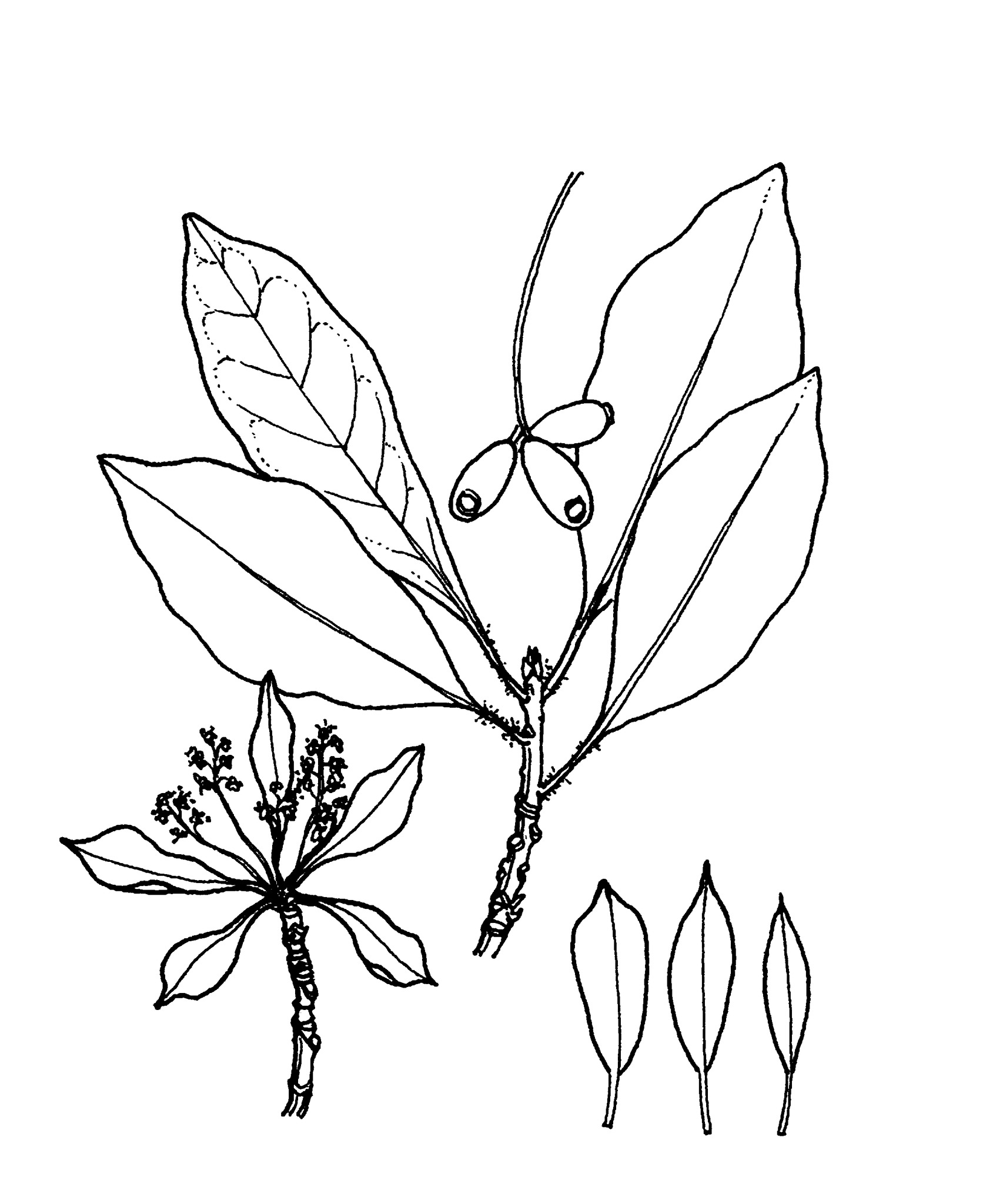
Commemorating Nyssa, a water nymph of Greek mythology.
Deciduous trees to about 30 m tall. Leaves alternate, entire or with well-spaced teeth; stipules absent. Flowers axillary, stalked, small, greenish white, male, female or bisexual. Sexes on the same or different plants. Male flowers in dense heads. Female and bisexual flowers single or in small clusters. Calyx mostly cup-shaped with 5 teeth. Petals 5 on the edge of a prominent disk; late spring to early summer. Stamens 10. Fruit a mostly 1-seeded drupe.
Grown for the attractive bright autumn foliage and the intricate branch tracery in winter.
N. sinensis Oliv., Chinese Tupelo, is occasionally available; it is a smaller tree with abruptly pointed leaves and more showy red and yellow autumn foliage. N. aquatica L., Water Tupelo, has larger purplish fruit mostly more than 2.5 cm long. N. ogeche Marsh.,Ogeche Tupelo, from N America is also occasionally listed.
5 species, 3 from E North America, 1 from Asia and 1 from Indomalesia.
Semi-softwood cuttings, layers.
The fruits of most species are edible when preserved, the flowers are a good source of honey; Tupelo is used for timber.
Leaves wedged or rounded at the base, often strongly coloured in autumn; bracts absent.
Source: (2002). Nyssaceae. In: . Horticultural Flora of South-eastern Australia. Volume 3. Flowering plants. Dicotyledons. Part 2. The identification of garden and cultivated plants. University of New South Wales Press.
